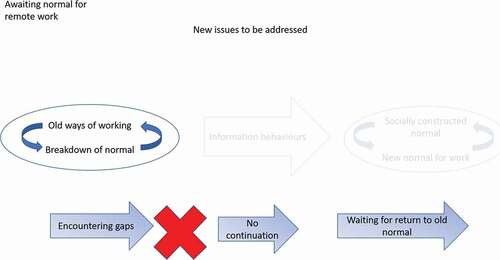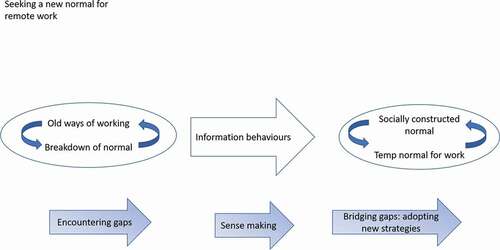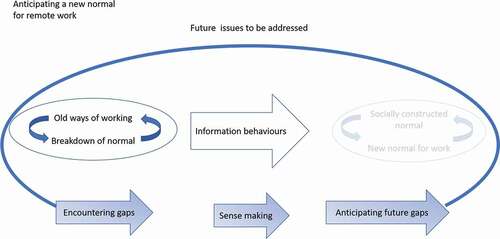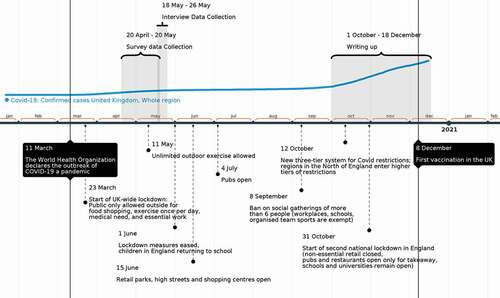Figures & data
Table 1. Outline of issues addressed by workers and strategies implemented while working remotely.
Figure 2. An Instance of the new normal of work model adapted from genuis and bronstein’s model of those awaiting a return to normal for work during the pandemic. In this instance, people have encountered gaps working from home, but due to the uncertainty around how long they will have to WfH have opted to “wait it out.” They do not seek new strategies for addressing these gaps and simply await their old normal to return.

Figure 3. An Instance of the new normal of work model adapted from genuis and bronstein’s model of those seeking normal for work during the pandemic. going from the breakdown of normal in the old ways of working through to constructing a temporary new normal for work. this takes people through encountering gaps in their normal practices, into information seeking and a sensemaking of how to address these gaps and finally into establishing a new normal.

Figure 4. An Instance of the new normal of work model adapted from genuis and bronstein’s model of those anticipating a normal for work after the pandemic. in this case, people may have identified and addressed gaps stemming from the breakdown of their old ways of working. Rather than adapting these and settling into a normal, they anticipate future disruptions in working and build toward that future normal.


